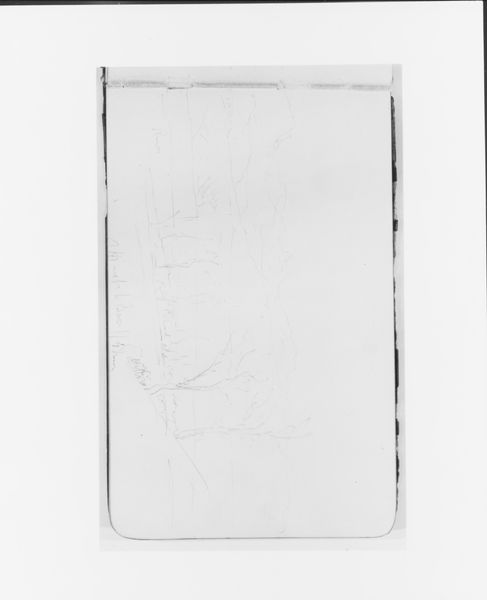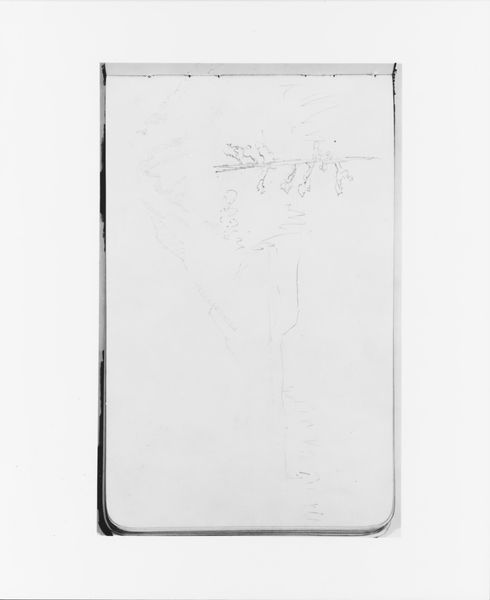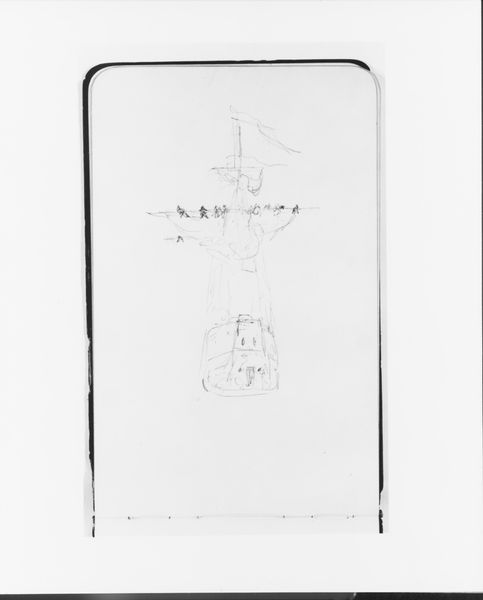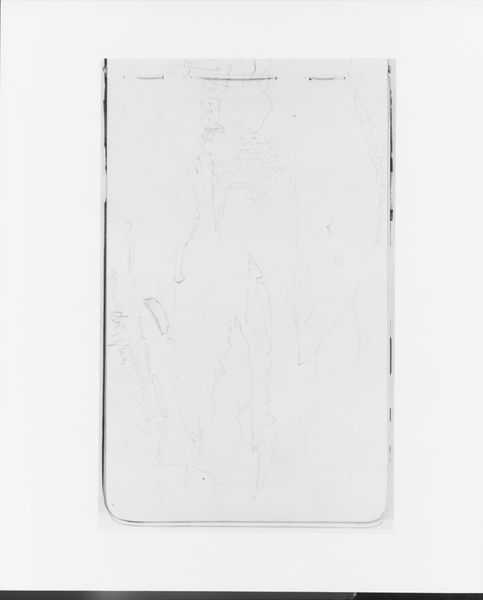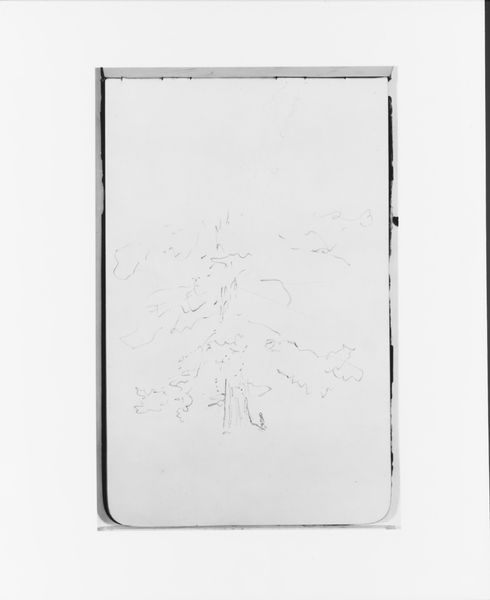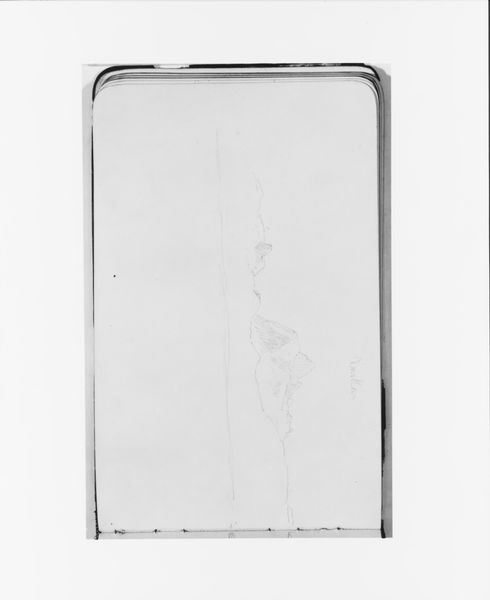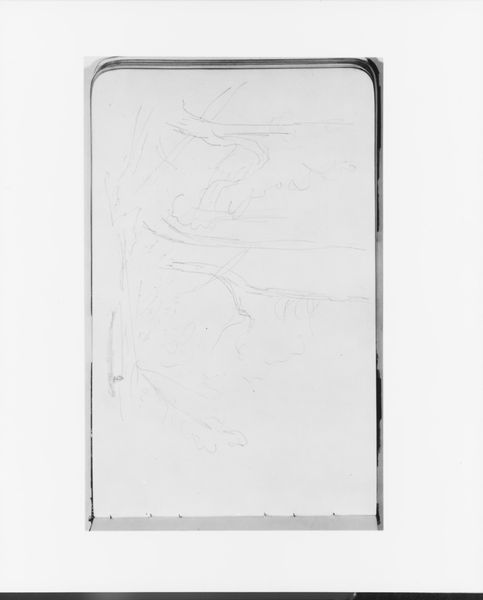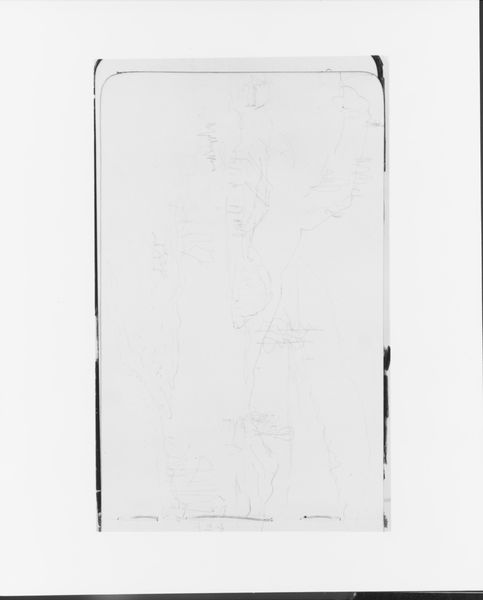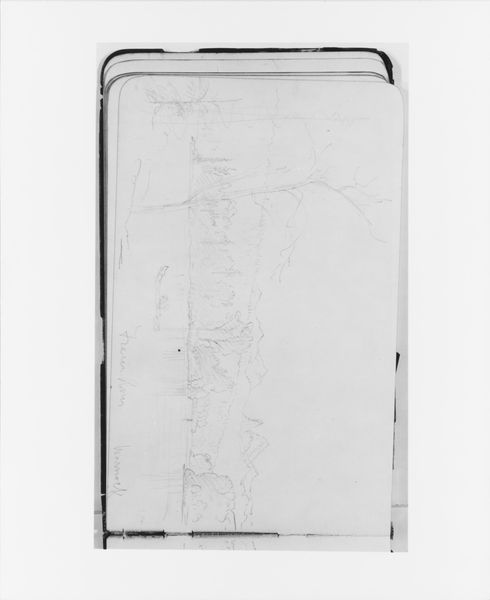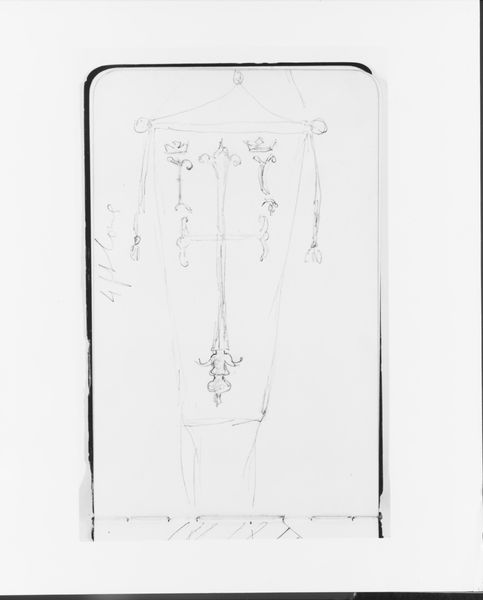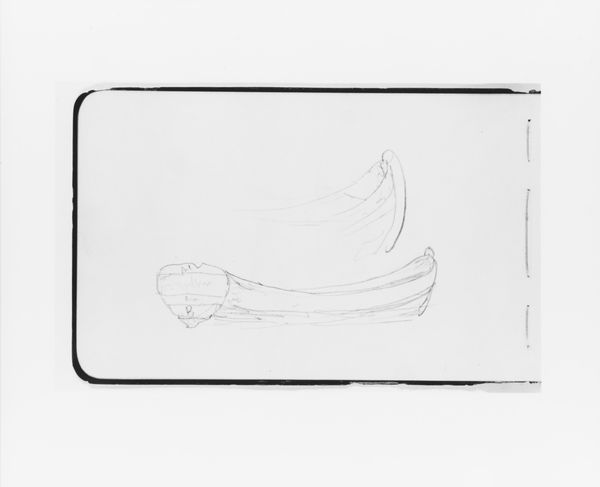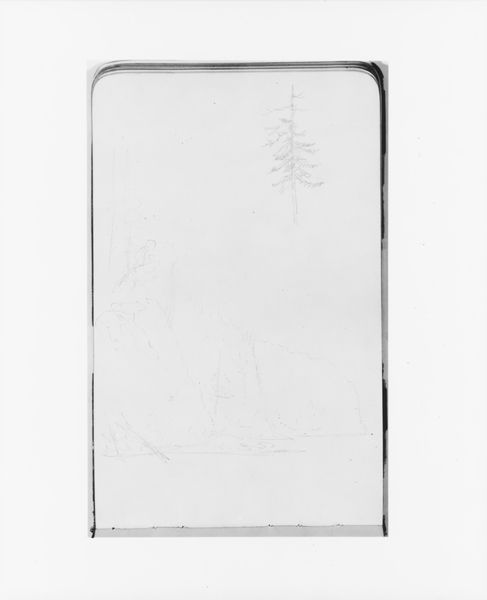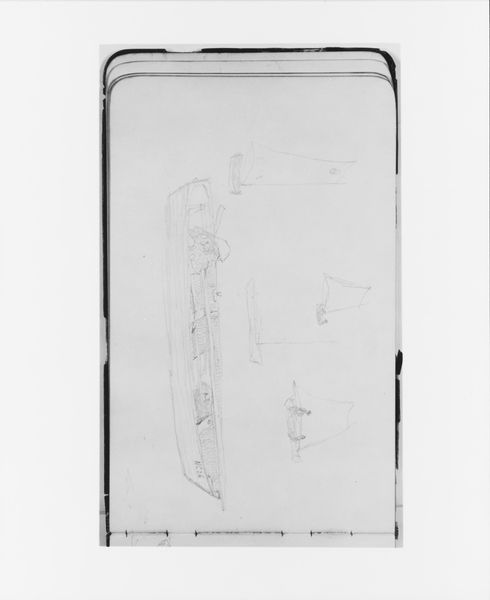
Sketches of Armor and Figure (from Sketchbook) 1891
0:00
0:00
drawing, pencil
#
portrait
#
drawing
#
human-figures
#
figuration
#
pencil
#
line
#
armor
Dimensions: 4 3/4 x 7 3/4 x 7/16 in. (12.1 x 19.7 x 1.1 cm)
Copyright: Public Domain
Curator: Albert Bierstadt's "Sketches of Armor and Figure (from Sketchbook)," dating to 1891, offers an intimate glimpse into the artist's preparatory process. Crafted in pencil on paper, these figures now reside here at The Met. What catches your eye first? Editor: It's the incompleteness, that feeling of something caught in-between. There is a lightness of touch, almost ethereal, in the depiction of these figures and pieces of armor. They seem like ghostly impressions more than fully realized forms. Curator: Indeed, the open composition allows for a study into the visualization of historical power, specifically medieval and Renaissance armaments, during the Gilded Age. These aren't heroic portrayals but studies – almost clinical, really. Editor: That’s interesting—because I immediately read something into this clinical style, too. Look at how exposed the figures are in relation to their armor, how vulnerable, splayed out on what feels like a surgical table almost, not unlike diagrams from 19th-century medical textbooks that fetishized white bodies as specimens. And it echoes the cultural moment. As new European immigrants made it into US military posts, some perceived the figure of the American body—the "nation’s armor," as it were—was under siege. Curator: That’s a provocative reading. We know Bierstadt explored similar themes in his paintings. And considering Bierstadt's established reputation for dramatic landscapes, these figures do seem rather subdued. It seems he intended for us to perceive how such status symbols functioned in a Euro-American context. Editor: Exactly. What's fascinating, too, is the way he situates these forms on the page: the layering and repositioning speak to a preoccupation with the ideal male form and anxieties about white national identity at a historical turning point. Even this glimpse of Bierstadt’s mind tells us something about cultural preoccupation at that moment. Curator: Absolutely. The sketch provides us a framework of visual languages, demonstrating a relationship between the visual politics of portraiture and military masculinity. Editor: Seeing it this way provides so much insight, and it allows me to revisit what I had assumed about preliminary drawings and connect this piece to something urgent in our current cultural moment. Thank you. Curator: You've illuminated some compelling narratives contained within this modest sketch, revealing layers of historical significance. It makes me want to reconsider the role such studies have in the trajectory of public cultural life.
Comments
No comments
Be the first to comment and join the conversation on the ultimate creative platform.
